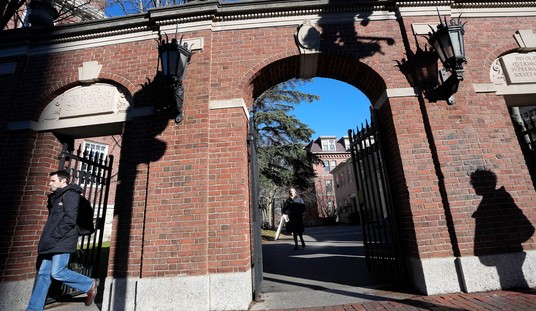The Biden-Harris administration on Friday announced proposed rules that, if finalized, would bail out an estimated 8 million student loan borrowers experiencing “hardship.”
A Department of Education press release explains that a borrower’s entire outstanding balance could be cleared if it is determined that a “hardship is likely to impair the borrower’s ability to fully repay the loan or render the costs of continued collection of the loan unjustified.”
The proposed rule would apply to those borrowers who do not currently qualify for any of the administration’s other bailout options. According to the Department of Education, “hardship” could include financial burdens such as “unexpected medical bills, high child care costs, significant expenses related to caring for loved ones with chronic illnesses, or devastating economic circumstances from the impacts of a natural disaster.”
If these rules, which were prepared following the Department’s negotiated rulemaking session in February 2024, are finalized as proposed, millions of borrowers could access relief if they met the criteria specified through two different pathways for relief. The rulemaking committee reached consensus on the regulatory text in these proposed rules.
The first pathway would recognize the Secretary’s authority to grant individualized, automatic relief without an application. The Secretary could provide relief on a one-time basis to borrowers who the Department determines, based on a predictive assessment using existing borrower data, have at least an 80% chance of being in default within the next two years. The 17 non-exclusive factors that could be used for determining whether a borrower who is suffering hardship can qualify for relief include household income, assets, types and balances of student loans, debt balances and required payments relative to household income, Pell Grant recipient information, and more. The Secretary could then waive those loans to address hardships and prevent the severe consequences of default.
The second pathway would allow current and future cohorts of borrowers to receive relief based on a holistic assessment of the borrower’s hardship and would be primarily application-based. The Department would holistically assess whether a borrower is highly likely to be in default or experience similarly severe negative and persistent circumstances. If no other payment relief option exists to sufficiently address the borrower’s persistent hardship, the Secretary could waive the loan. The Secretary would stand up an application to begin to holistically assess borrower circumstances. Some factors that may be considered when holistically assessing borrower circumstances are also included in the proposed regulations.
By specifying pathways that authorize both automatic relief for millions of borrowers experiencing a qualifying hardship and a primarily application-based process for borrowers to obtain relief in the future, this proposal would support student loan borrowers for generations to come. Further, this action would authorize relief for many of the most at-risk borrowers. For example, approximately two-thirds of borrowers eligible for individualized, automatic relief under the first pathway would be Pell Grant recipients. (Department of Education)
Recommended
“For far too long, our broken student loan system has made it too hard for borrowers experiencing heartbreaking and financially devastating hardships to access relief, and it’s not right,” said Secretary of Education Miguel Cardona. “The rules proposed by the Biden-Harris Administration today would provide hope to millions of struggling Americans whose challenges may make them eligible for student debt relief. President Biden, Vice President Harris, and I will not stop fighting to deliver student debt relief and create a fairer, more just, and more affordable student loan system for all borrowers.”
A public comment period will open in the next few weeks for 30 days. The Department of Education said it expects to finalize the regulations next year, though given the outcome of the presidential election and legal challenges from Republicans, it remains to be seen what will come of the proposed rules.























Join the conversation as a VIP Member